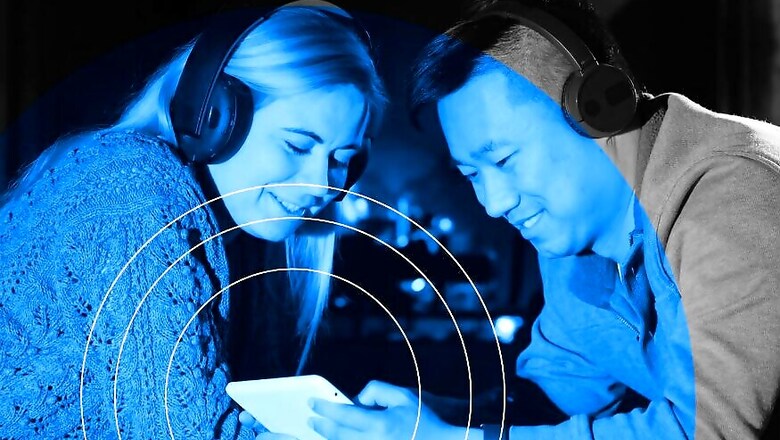
views
In all the hustle and bustle of flashy gadget launches at CES 2020, not many would be enthralled when you talk to them about improvements to Bluetooth connectivity. In reality, though, what the Bluetooth Special Interest Group (SIG) unveiled today is as important as any other tech announcement that you've followed. Say hello to LE Audio, the latest standard of Bluetooth connectivity that will feature in (hopefully) all our future Bluetooth speakers, headphones and earbuds, finally addressing the shortcomings of Bluetooth audio streaming technology that we've long been clamouring for.
LE Audio, going by the announcements so far, is coming with key specifications that can overhaul our wireless audio streaming experience. One of its key features is multi-stream audio, using which a single source device (such as a smartphone) will be able to stream uniformly synced audio to multiple devices. This can significantly change how true wireless earbuds of today operate — with present generation Bluetooth 5 connectivity, true wireless earbuds make one of the two earbuds pair with the smartphone first, and then use a parallel connectivity driver to pair with the second earbud. Often, this results in streaming lags, connectivity drops, and even irregularities with Bluetooth connection where only one earbud pairs with the smartphone, and the other refuses to pair.
Simultaneously, LE Audio will also allow you to stream audio from your device to multiple devices. This can be particularly beneficial if, say, you wish to share your music with your friend. The situation works on the reverse as well, wherein you can pair your wireless earphones with your smartphone, tablet, laptop or even your TV, and seamlessly switch between devices at the touch of a button, without needing to go through the entire pairing and unpairing business.
The even bigger impact of LE Audio can be thanks to a new codec that it is introducing, called the low complexity communication codec (LC3). With LC3, Bluetooth SIG is promising superior audio fidelity and streaming quality, at just half the streaming bitrate. This can have a two-pronged effect — wireless headphones can choose to use half the data bandwidth required for standard audio streaming, therefore using lesser power and increasing the overall battery life; alternatively, high fidelity wireless audio gear can choose to maintain the overall audio bandwidth and offer a richer, more elaborate audio experience — complete with rich dynamic range of sound and uber high precision. The result? While it's too early to pass a verdict, LE Audio may just be the coming of age for wireless headphones, and bring wireless audio up to speed with the best of wired audio products that often require elaborate setup to work perfectly.
LE Audio can have even more benefits to it, some of which include a 'broadcast audio' feature that allows users of wireless headphones to seamlessly pair with public broadcast sources without a complex pairing process. This can prove crucial in a space such as a multi-lingual conference, or an airport lounge, or such similar public spaces. This may also help boost users with hearing deficiencies, in turn helping them function like individuals with normal hearing.
Unfortunately, LE Audio cannot be enabled by a simple software update, and you will only be able to use it once OEMs start launching devices with LE Audio certification. We don't quite expect to see the first devices by 2020, and the first of LE Audio-enabled product may even be a bit expensive. But all things considered, LE Audio sounds like the much needed Bluetooth audio revolution that we've all been clamouring for.


















Comments
0 comment